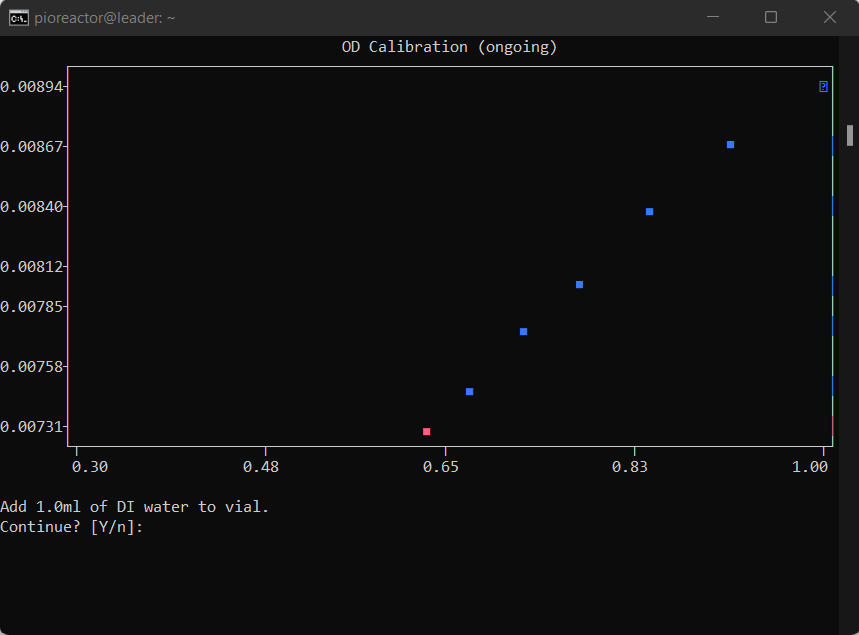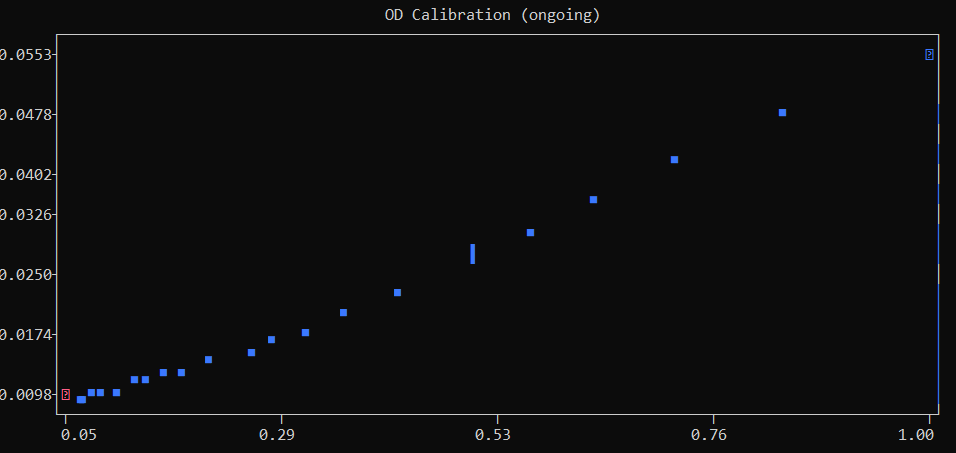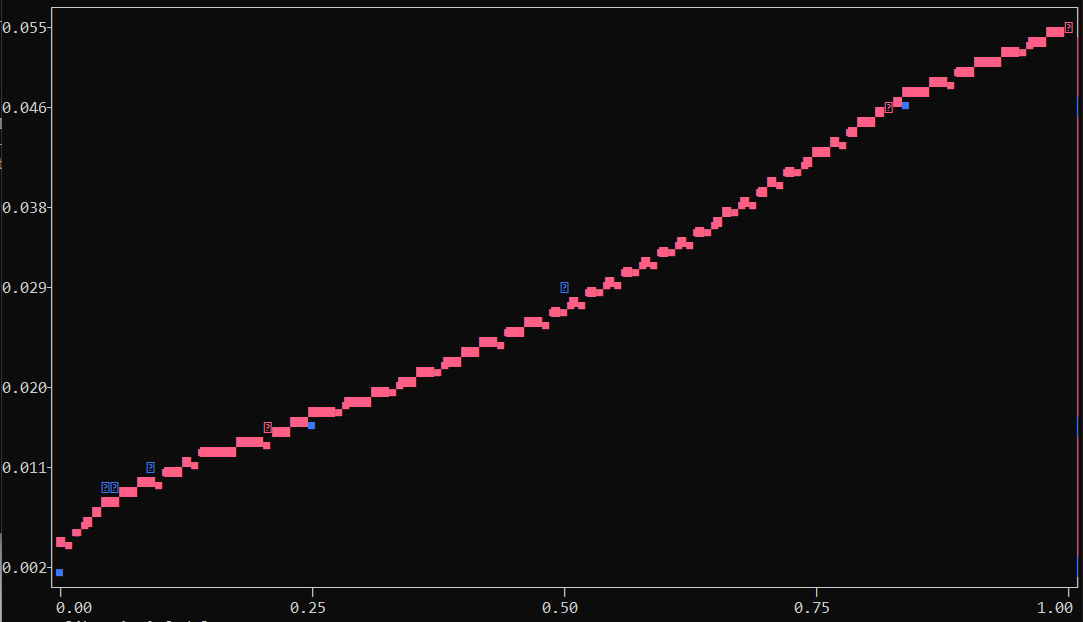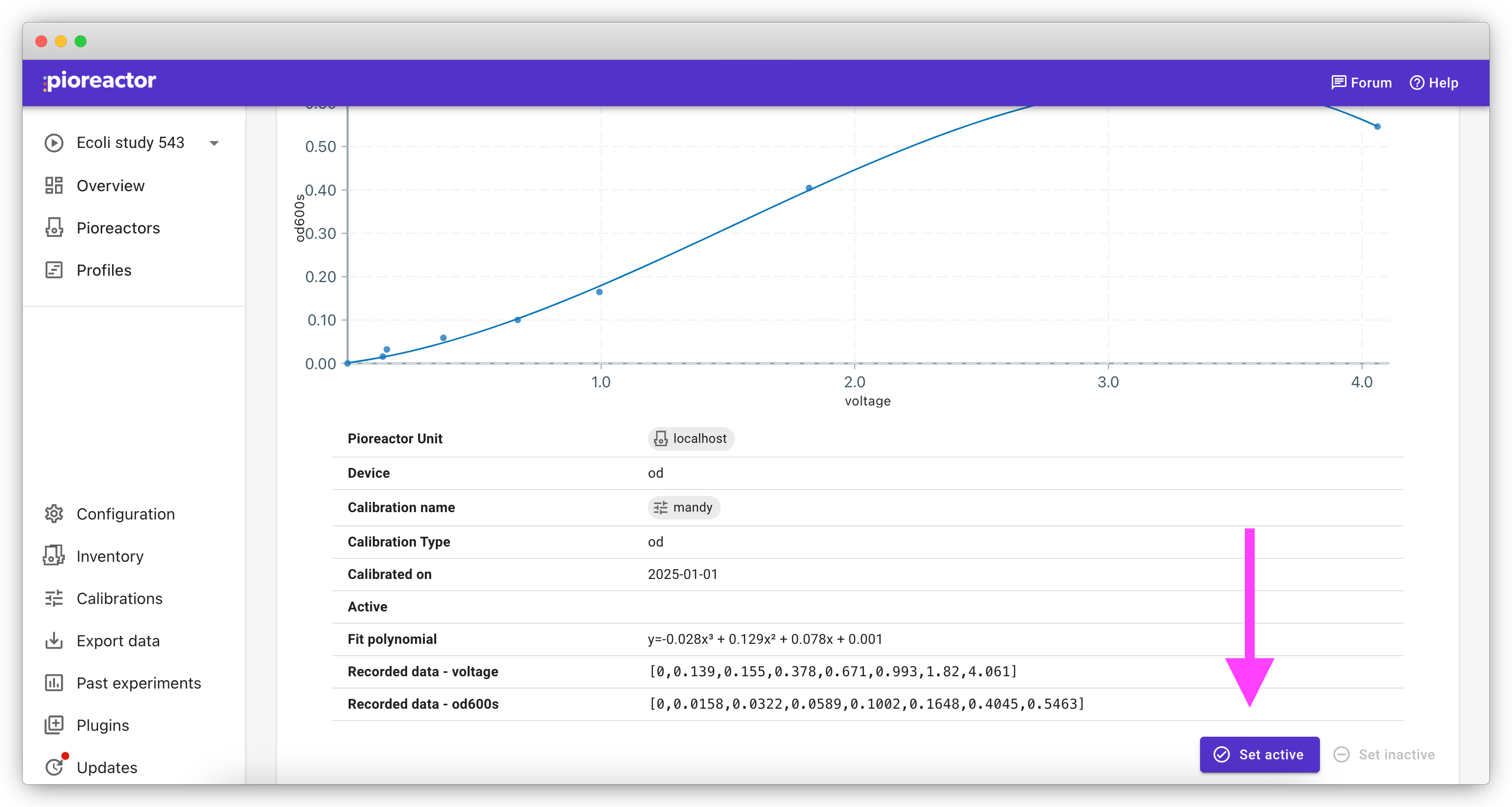Standard curves for OD600 readings
Calibrating your OD600 readings
Depending on the purposes of your research, you may want to calibrate your Pioreactor against known samples and OD600 values. We've given you the option to do this through the command line, similar to how pump and stirring calibrations currently work.
There are two protocols to create an OD calibration.
-
The
single_vialprotocol requires only require one vial, your sample of interest, and an accurate way to measure liquids (we recommend a micropipette of volume range 100 to 1000 uL). The protocol works by reading a dilution series. You will start with 10mL of your sample of interest cultivated in your media, at the highest density you expect to observe. During the calibration, you will specify and add an amount of your media to dilute your sample. To avoid overflowing, the program will prompt you to reduce the volume in your vial to 10mL at set intervals. Depending on your number of measurements, you may be prompted to reduce your vial volume to 10 mL. OPTIONAL: At this point, you may take the OD600 reading of your vial on a different instrument and input this OD600 value for the current measurement. -
The other protocol,
standards, requires multiple vials that each contain a liquid with measured OD600. They act as standards. This option is quicker for calibrating multiple Pioreactors, too.
Calibrations should be specific to your experiment setup. Any changes to your media, culture, or optical setup (i.e. changing IR intensity, replacing pieces, or changing the angle) may require a new calibration. If everything remains consistent, then we recommend running calibrations every 6 months, or whatever suits your purposes.
All your OD calibrations are saved to disk, and can be edited afterwards.
Running the calibration
Connect to your Pioreactor by typing ssh pioreactor@<insert unit name>.local. For example, to calibrate on our Pioreactor named worker3, we typed ssh pioreactor@worker3.local. The default password is raspberry.
To begin calibrations, type pio calibrations run --device od, and choose the protocol. Start off by inputting some metadata of your calibration. Provide a descriptive and unique name to make it easier to find your calibration again, if needed. Follow the rest of the questions.
Following the questions, stirring and optical density reading will begin. A graph is generated as you calibrate so you can see your progress.

Once you complete all your measurements, a calibration curve will appear over your graph. If you are satisfied with this, save your calibration.
By default, we fit the calibration curve with a polynomial. You can choose the degree of the polynomial if you wish, but we found that degree 4 works well for wide OD600 calibrations, and degree 1 (a linear model) works will for narrow calibrations near 0.


Using calibrations in your experiments
Calibrations are applied automatically during OD Readings. That is, after performing a calibration, your future experiments that use optical density readings will use the post-calibration values and be displayed in the UI and saved to the database.
To change the OD calibration you wish to use for an experiment, visit the Calibrations page, select the calibration you wish to use, and select "Set Active". Only one calibration can be Active at a time.

You can disable calibrations by changing the OD device to have no Active calibration in the Calibrations page.
Editing your previous calibrations
The calibrations are saved as a YAML file on your Pioreactor. You can edit these files directly on the command line. If you want to re-analyze the dataset, you can use the following tool:
pio calibrations analyze --device od --name <name of your calibration>
Sharing calibrations
Since the calibrations are just YAML files, you can easily share existing calibrations to other Pioreactors.